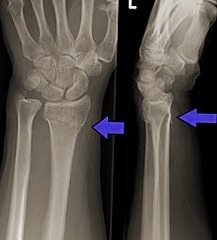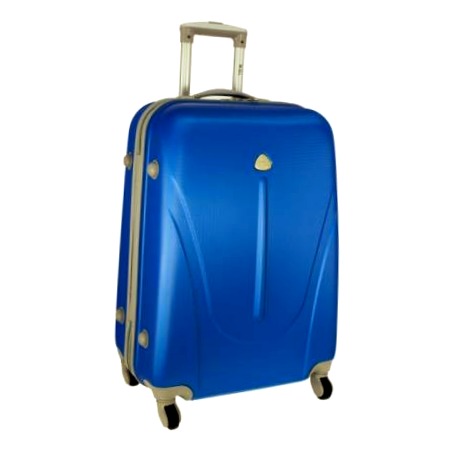How to Fix Portable Washer Spinner
In the fast-paced rhythm of our daily lives, portable washers have become indispensable for their convenience and space-saving features. At the core of these compact marvels lies a crucial component: the spinner. This often-overlooked yet vital element ensures your clothes emerge clean and fresh.
As we delve into the intricacies of maintaining and fixing portable washer spinners, join us on a journey to understand the common issues that can disrupt the heartbeat of your laundry routine. Discover practical solutions, troubleshooting techniques, and essential maintenance tips that will restore functionality and extend the lifespan of your trusty portable washer. Let’s unravel the mysteries behind spinner malfunctions and empower you to keep your laundry routine spinning smoothly and effortlessly.
Common Issues with Portable Washer Spinners
1. Lack of Spinning Motion
Portable washer spinners may encounter a frustrating issue where they fail to initiate or maintain the spinning motion during the laundry cycle. This problem can often be attributed to factors such as overloading, imbalance in the load, or underlying motor issues.
To resolve this, redistribute the load to ensure even weight distribution. If the problem persists, inspect the motor and connections for any signs of damage or malfunction. In some cases, a simple recalibration or resetting of the motor can effectively address the lack of spinning motion.
2. Excessive Vibration During Spinning
Excessive vibration during the spinning cycle is a common concern that can lead to noise disturbances and potential damage to the washer. Uneven load distribution, leveling problems, or damaged components may contribute to this issue.
To mitigate excessive vibration, level the portable washer on a stable surface. Additionally, carefully rearrange the load to ensure a balanced distribution within the drum. Inspecting and tightening loose components like bolts or nuts can further contribute to a smoother, vibration-free spinning cycle.
3. Unusual Noises During Spinning
Unusual noises emanating from the portable washer spinner can be unsettling. Foreign objects lodged in the drum, worn-out components, or loose parts may be the culprits behind these disturbances. Begin the troubleshooting process by inspecting the drum for any foreign objects and removing them. If the noise persists, examine components such as bearings, belts, or pulleys for signs of wear and tear. Lubricating moving parts or replacing damaged components will often resolve the issue, restoring a quieter and more efficient spinning cycle.
Excessive vibration during spinning – How do you solve it?
Excessive vibration during spinning can be a common issue with portable washer spinners, causing noise disturbances and potentially impacting the appliance’s stability. To address this problem, follow these steps:
1. Leveling the Washer
Ensure that the portable washer is placed on a level surface. Use a bubble level to check the machine’s horizontal alignment. If it’s not level, adjust the feet of the washer to stabilize it. A stable and level base prevents unnecessary vibrations during the spinning cycle.
2. Proper Load Distribution
Uneven distribution of laundry within the drum can contribute to imbalances and vibrations. Before starting a cycle, arrange the clothes as evenly as possible. Avoid overloading the washer, and distribute the weight of the laundry evenly to prevent the drum from becoming unbalanced during the spin cycle.
3. Inspect and Tighten Components
Regularly check for loose components such as bolts, nuts, or fasteners. Vibrations can occur if any part of the washer is loose. Using the appropriate tools, tighten any loose connections securely. Pay special attention to the drum and other moving parts prone to vibrations.
4. Check for Damaged or Worn Parts
Examine the washer’s components for signs of damage or wear. Damaged parts, such as shock absorbers or springs, can contribute to excessive vibration. If any components show visible wear, consider replacing them to restore the washer’s optimal performance.
5. Reduce Load Size
Overloading the washer can strain its internal components and lead to increased vibrations. Stick to the recommended load capacity specified by the manufacturer. Reducing the load size can alleviate stress on the machine and contribute to a smoother spinning cycle.
Unusual noises during spinning
Unusual noises during the spinning cycle of a portable washer can be disconcerting and may indicate underlying issues. To troubleshoot and resolve these noises, follow these steps:
1. Inspect for Foreign Objects
Unfamiliar sounds may be caused by foreign objects, such as coins or small items, lodged in the drum. Before starting a new cycle, thoroughly check the drum for any objects causing the noise. Remove foreign items to prevent damage to the washer and restore a quieter operation.
2. Check for Worn-Out Components
The spinning cycle can amplify the sounds of worn-out components, such as bearings, belts, or pulleys. Inspect these parts for visible signs of wear, such as fraying, cracking, or irregularities. If any components appear worn, consider replacing them to eliminate the source of the unusual noises.
3. Lubricate Moving Parts
Lack of lubrication can contribute to friction and noise in moving parts. Regularly lubricate components like bearings and pulleys with the appropriate lubricant as the manufacturer recommends. This simple maintenance step can reduce friction, diminish noise, and prolong the washer’s lifespan.
4. Ensure Proper Installation
Improper installation or placement of the washer can lead to vibrations and unusual noises. Confirm that the washer is level on a stable surface. Adjust the feet of the machine to achieve proper leveling. Additionally, ensure that the washer is not in direct contact with other objects or surfaces that could transmit and amplify vibrations.
5. Inspect Belt Tension
If your washer uses belts for spinning, check the tension of these belts. A loose or overly tight belt can cause noise issues during operation. Adjust the tension to the manufacturer’s specifications to ensure proper functioning and reduce unwanted sounds.
6. Professional Inspection
If the unusual noises persist despite these troubleshooting efforts, it may be advisable to seek the expertise of a professional technician. They can conduct a more in-depth inspection, identify the root cause, and perform necessary repairs or replacements.
Step-by-Step Guide to Fixing Portable Washer Spinner
While compact and convenient, portable washer spinners may encounter issues that hinder their performance. This step-by-step guide is designed to help you diagnose and fix common problems with your portable washer spinner, restoring it to optimal functionality.
1. Safety Precautions
Before embarking on any repairs, prioritize safety. Disconnect the power supply to the washer and ensure it is on a stable surface. Safety precautions create a secure environment for troubleshooting and fixing without the risk of electrical accidents or instability.
2. Basic Inspection
Initiate the fixing process with a basic inspection. Visually assess the spinner for visible damage, loose parts, or foreign objects. Identifying these issues at the outset can streamline the troubleshooting process.
3. Lack of Spinning Motion
Consider factors like overloading, imbalance, or motor issues if your spinner is not initiating or maintaining the spinning motion. Adjust the load distribution to ensure even weight, and inspect the motor for loose connections or damage. Recalibrating or resetting the motor may be necessary.
4. Excessive Vibration
Leveling problems, uneven load distribution, or loose components can cause excessive vibration during spinning. Begin by leveling the washer on a stable surface and rearranging the load for a balanced distribution. Inspect and tighten loose bolts, nuts, or fasteners to minimize vibrations.
5. Unusual Noises
Unfamiliar sounds during the spinning cycle may result from foreign objects, worn-out components, or loose parts. Check for foreign objects in the drum and remove them. Inspect belts, bearings, and pulleys for signs of wear, and lubricate moving parts to reduce friction and noise.
6. Professional Assistance
Know when to seek professional help if your efforts do not resolve the issues. Provide contact information for customer support or repair services, ensuring users can access expert assistance.
7. Maintenance Tips for Prevention
To prevent future issues, incorporate regular maintenance into your routine. Clean the drum and spinner, inspect components for wear, adhere to load capacity guidelines, and level the washer. Lubricate moving parts, avoid overloading and follow the manufacturer’s guidelines for optimal performance.
Conclusion
In portable washer maintenance, addressing spinner issues is key to ensuring a seamless laundry experience. This step-by-step guide empowers users to troubleshoot and resolve common problems systematically. Users can breathe new life into their portable washer spinners by adhering to safety precautions, conducting a basic inspection, and tackling specific issues like lack of spinning motion, excessive vibration, and unusual noises.
Additionally, recognizing when to seek professional assistance adds a layer of assurance for more complex problems. The guide doesn’t end with fixing; it extends into proactive measures with maintenance tips to prevent future issues. Regular cleaning, load management, and adherence to manufacturer guidelines enhance the appliance’s longevity.














